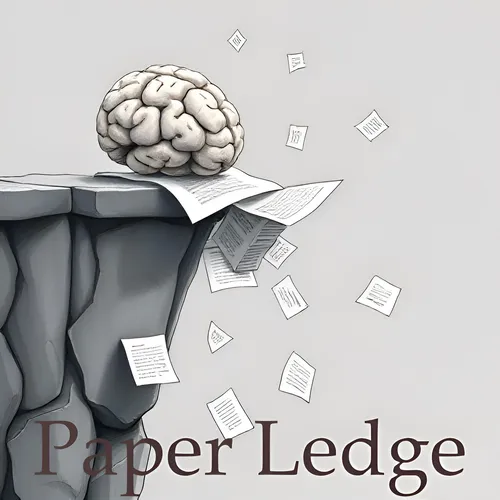Machine Learning - ExPO Unlocking Hard Reasoning with Self-Explanation-Guided Reinforcement Learning
- Author
- ernestasposkus
- Published
- Sun 06 Jul 2025
- Episode Link
- https://www.paperledge.com/e/machine-learning-expo-unlocking-hard-reasoning-with-self-explanation-guided-reinforcement-learning/
Hey PaperLedge learning crew, Ernis here, ready to dive into some fascinating research! Today, we're tackling a paper about how to make those super-smart AI language models, like the ones powering your chatbots, even smarter when it comes to reasoning.
So, picture this: you're teaching a dog a new trick. You can either reward the dog when it almost gets it right (that's the usual reinforcement learning approach), or you can physically guide the dog through the trick, showing it exactly what to do. This paper looks at how to best 'guide' AI models to become better reasoners.
Now, the standard way to level up these models is through something called "reinforcement learning," or RL. Think of it like giving the model a thumbs-up or thumbs-down based on its answer. A popular approach, GRPO, has the model generate its own answers and then checks if they are correct. If they are, great! The model learns to do more of that. But here's the catch: This only really works if the model is already pretty good. It's like sharpening a knife – it makes a good knife better, but it won't turn a butter knife into a chef's knife. It primarily refines what the model already knows (distribution sharpening) rather than enabling the model to solve problems where it initially fails.
What if the model is completely stumped? That's where things get tricky. The paper argues that these models need to explore new ways of thinking, new "reasoning trajectories," to truly improve. They need a little nudge to get them out of their comfort zone. The problem is, if the model is failing, it’s unlikely to generate the right answers needed to learn.
The obvious solution? Show them how it's done! Use "expert demonstrations," right? Like showing the dog the trick perfectly. But the researchers found something interesting: just feeding the model correct answers, like using perfect solutions written by humans, often doesn't work very well in this type of post-training!
Why? Well, the paper identifies two key things that make "teaching examples" effective:
- First, the example needs to be something the model could reasonably come up with itself. It needs to be likely under the current policy. Think of it like this: if you're teaching a toddler to draw, you wouldn't start with a photorealistic portrait. You'd start with a simple stick figure.
- Second, the example needs to actually help the model get to the right answer. It needs to increase the model's likelihood of predicting the correct answer. It has to provide a meaningful step towards the solution.
In other words, the best examples are both relevant and helpful.
So, what's the solution? The researchers came up with something called Self-Explanation Policy Optimization (ExPO). Think of it as giving the model a hint rather than the whole answer. ExPO works by conditioning the model to explain how it arrived at the correct answer, given the ground truth.
The core idea is this: instead of just showing the model a perfect answer, you ask it to explain its own reasoning given that it knows the final answer. This forces the model to create reasoning steps that are both consistent with what it already "knows" (its policy) and also lead to the right solution.
It's kind of like giving a student the answer to a math problem and then asking them to show their work. They have to figure out a logical path to get from the starting point to the answer, even though they already know what the answer is.
The results? ExPO was able to significantly improve the model's reasoning abilities, especially on really tough problems where the model initially struggled. It even outperformed methods that relied on those "expert demonstrations" we talked about earlier!
So, why does this matter?
- For AI developers: This research provides a new and more effective way to train AI models to reason, potentially leading to more powerful and reliable AI systems.
- For educators: The idea of "self-explanation" resonates with educational principles. It suggests that forcing students to explain their reasoning, even when they know the answer, can deepen their understanding.
- For everyone: As AI becomes more integrated into our lives, it's crucial that these systems can reason effectively and reliably. This research contributes to that goal.
Here are a few things that popped into my head while reading this paper:
- Does the effectiveness of ExPO depend on the quality of the "ground truth" answers? What happens if those answers are flawed or incomplete?
- Could this self-explanation approach be applied to other areas of AI, such as image recognition or natural language understanding?
- How does the computational cost of ExPO compare to other reinforcement learning methods? Is it more or less efficient in terms of training time and resources?
That's all for today's deep dive, learning crew! I hope you found that as fascinating as I did. Until next time, keep exploring!
Credit to Paper authors: Ruiyang Zhou, Shuozhe Li, Amy Zhang, Liu Leqi
